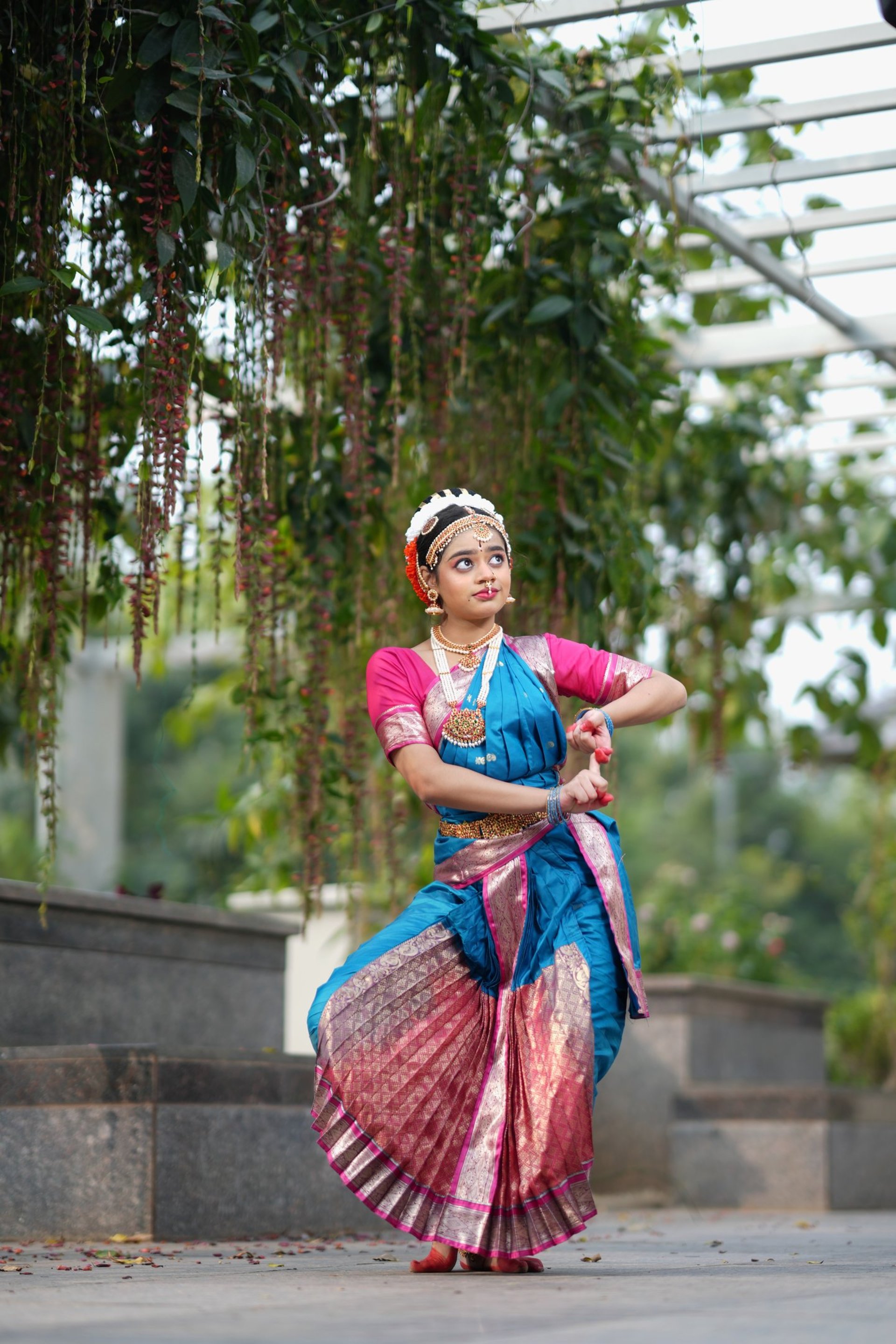
Grace of Kuchipudi
"Yatho Hasta thatho Drishti, Yatho Drishti thatho Manah Yatho Manah thatho Bhaava, Yatho Bhaava thatho Rasa"
...hand gestures (hasta) guide the gaze (drishti), the gaze directs the mind (manah), the mind influences emotions (bhava), and emotions ultimately create rasa (the emotional essence or aesthetic experience) in performance..


Navarasas or the nine essential emotions, form the cornerstone of classical Indian dance and art. They serve as the primary means through which stories and characters are brought to life on stage. Each rasa, a unique blend of Vibhavas (determinants) and Anubhavas (consequents), elicits a specific emotional response in the audience. From the tender expressions of Sringara Rasa (Love) to the intense and fearsome displays of Raudra Rasa (Anger) and Bhayanaka Rasa (Fear), these emotions encompass the vast spectrum of human experience.
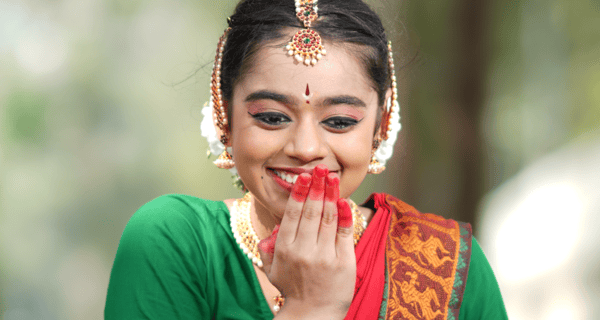

Hasya Rasa is provoked by the sthayi bhava of Hasa (happiness) and aims to entertain and uplift the audience. It is associated with laughter, smiles, giggles, and a lighthearted atmosphere. Various vibhavas (determinants), such as an unseemly dress or humorous actions, trigger the Hasya Rasa, leading to anubhavas (consequents) like laughter, playful gestures, and comic facial expressions. These are classified into six types: Smitha (gentle smile), Hasita (slight laugh), Vihasitha (open laughter), Upahasitha (laughter of ridicule), Apahasita (obscene laughter), and Atihasita (boisterous laughter). Each type reflects a different level or quality of humor, ranging from gentle smiles to uproarious laughter. An example is the Sita Swayamvaram episode, where the humorous attempts of kings trying to lift Lord Shiva’s Pinaka bow create a lighthearted atmosphere that often evokes laughter from the audience. This use of humor not only entertains but also adds a playful dimension to the narrative.


Karuna Rasa is provoked by the sthayi bhava of Soka (sadness or disappointment) and arises from various vibhavas (determinants) such as witnessing suffering, misfortune, or the tragedy of others. Other determinants include curses, distress, calamities, and separation from loved ones. Like other rasas (such as Sringara and Hasya), Karuna Rasa also involves several anubhavas (consequents), including shedding tears, lamentation, a parched throat and mouth, pallor of the face, drooping limbs, and fainting. These expressions reflect the depth of sorrow experienced by the individual. A prominent example of Karuna Rasa is the Draupadi Vastraharan episode, where Draupadi is publicly humiliated in the Kaurava court after the dice game. In this moment of utter despair, she prays to Lord Krishna for help, evoking a deep sense of sorrow and empathy from the audience. The emotional intensity of this scene often leads to a shared sense of grief, as viewers are drawn into the tragedy of Draupadi’s plight.


Raudra Rasa is provoked by the sthayi bhava of Kroda (anger) and often originates in figures like rakshasas and danavas. It is triggered by various vibhavas (determinants), such as violation of modesty, abuse, falsehoods, harsh words, and jealousy. The resulting anubhavas (consequents) include actions like knitting the eyebrows, biting the lips, grinding the teeth, hitting the palm with a fist, shouting, or physical aggression. A notable example of Raudra Rasa can be seen in Lord Shiva when his consort Sati Devi burnt herself because her family members were constantly insulting Lord Siva. Out of anger he carries her in both his arms and performs the Tandava dance. In the middle of Tandava, Lord Siva pulls out a strand of his hair and throws it in anger. Out of this hair strand, Lord Veerabhadra was born.
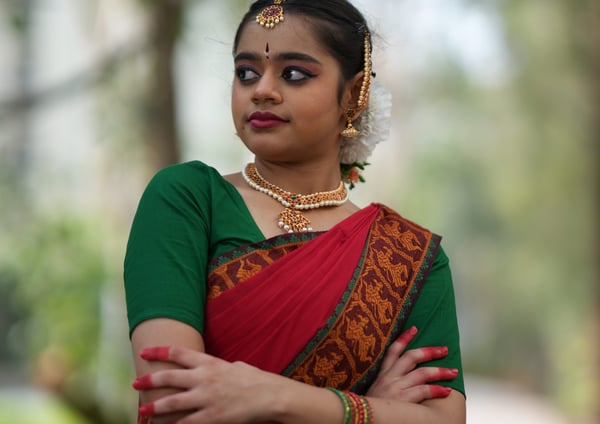

Vira Rasa is provoked by the sthayi bhava of Utsaha (enthusiasm) and manifests as feelings of valor, pride, and steadfastness. It is triggered by various vibhavas (determinants) such as Asammoha (absence of infatuation), good tactics, perseverance, and Parakrama (valor). The resulting anubhavas (consequents) include firmness, heroism, bravery, and a readiness to sacrifice. The Vira Rasa is consistently portrayed by Lord Rama. His willingness to honor his mother Kaikeyi and leave Ayodhya for 14 years of exile exemplifies his readiness to sacrifice. Another instance is when Lord Rama, angered by Ravana, kills him, demonstrating his heroism and unwavering commitment to righteousness. The Vira Rasa is also evident in Rama's strategic brilliance and leadership during the battle against Ravana, where his courage and determination inspire his allies and instill fear in his enemies, showcasing his unmatched valor and sense of duty.


Bhayanaka Rasa is produced by the sthayi bhava of Bhaya (fear) and arises from various vibhavas (determinants) such as terrifying noises, encounters with spirits, walking alone in a forest at night, empty houses, and death. The anubhavas (consequents) of this rasa include trembling limbs, eye movement, goosebumps, pallor of the face, changes in voice and tone, paralysis, and suspicion. It evokes a deep sense of trembling in the heart, often in the face of terror or helplessness. One example of Bhayanaka Rasa is seen in Sugreeva from the Ramayana, who is filled with fear when faced with confronting his brother Vali to reclaim his kingdom and wife. Another instance is the fear experienced by Krishna's friends when they beg Mother Yashoda to stop telling the story of the demoness Putana, whose terrifying appearance and eyes haunt their minds, filling them with dread. This rasa powerfully conveys the emotional and physical effects of fear in vulnerable situations.
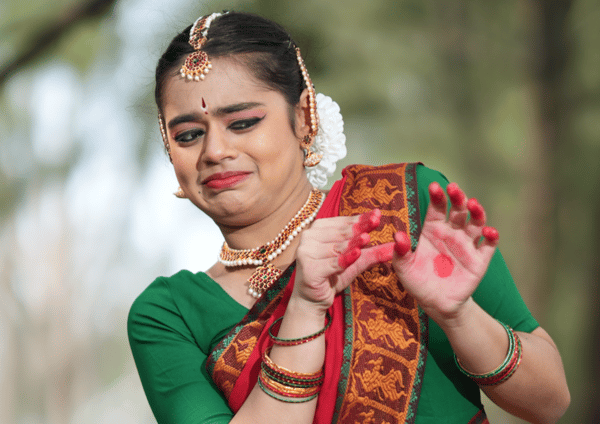

Bheebhatsa Rasa arises from the sthayi bhava of Jugupsa (disgust). It is triggered by various vibhavas (determinants), such as witnessing unpleasant sights, hearing or discussing undesirable things, and encountering disturbing or revolting experiences. The anubhavas (consequents) of this rasa include physical reactions like squeezing the limbs, grimacing, rolling the eyes, spitting, and expressing disgust, as well as feelings of nausea or illness. The battlefield is a primary setting for Jugupsa, as the sight of blood, dead bodies, and scavengers feeding on corpses often provokes a strong sense of revulsion. An example of Bheebhatsa Rasa in a different context can be found in the Sringara Rasa, where a Khandita Nayika (a woman who has been betrayed) experiences disgust toward her lover. Upon his return early in the morning with ligature marks, indicating infidelity, she feels a deep sense of disgust, as his actions betray her trust and evoke a powerful emotional reaction. This illustrates how Bheebhatsa Rasa can arise both from physical and emotional revulsion.


Adbhutha Rasa arises from the sthayi bhava of Vismaya (wonder or amazement). It is provoked by various vibhavas (determinants), such as witnessing a heavenly being, achieving a long-desired goal, observing magical feats, or encountering the unimaginable. The anubhavas (consequents) of this rasa include reactions like widening of the eyes, goosebumps, mouth opening, and even paralysis due to awe. This rasa is exemplified in the portrayal of Lord Jagannatha, Subhadra, and Balarama, all of whom are depicted with large, wide eyes to reflect their constant state of amazement. An example of Adbhutha Rasa occurs when Rohini, Balarama's mother, shares confidential stories of Lord Krishna in Vrindavan. Subhadra, Krishna's sister, is tasked with guarding the door to ensure no one overhears the sacred tales. As the stories unfold, Krishna, Balarama, and Subhadra are filled with utter disbelief and shock. Krishna and Balarama stand in front, while Subhadra stands behind them. As they listen, their eyes grow wide, their heads seem to shrink into their bodies, and their limbs draw inward, illustrating the overwhelming wonder they experience at hearing the divine stories.
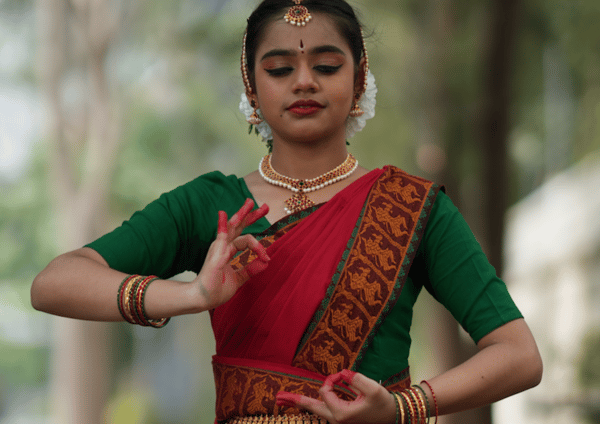

Santa Rasa is evoked by the sthayi bhava of Sama (peacefulness) and arises from a state of tranquility and inner calm. It is characterized by the absence of desires, detachment from worldly attachments, and a fearless state of mind. The essence of Santa Rasa lies in non-violence and harmlessness, where the mind remains undisturbed by external influences and is in a state of serene equilibrium. An exemplary portrayal of Santa Rasa can be seen in the life of Lord Krishna during the Mahabharata. Despite his unmatched prowess as a warrior, Krishna chooses to become the charioteer for Arjuna, refusing to take up arms in the battle. Instead, he guides Arjuna towards righteousness and inner peace, embodying the ultimate expression of tranquility and detachment. This act of selflessness, remaining peaceful amid the chaos of war, is a profound manifestation of Santa Rasa, illustrating the power of inner calm and spiritual serenity.
Sringara Rasa, evoked by the sthayi bhava of Rati (love), is associated with anything pure, beautiful, and worthy of admiration. It is divided into two main forms: Sambhoga (love in union) and Vipralambha (love in separation). Sambhoga is manifested through vibhavas (determinants) such as pleasant seasons, garlands, reunions with loved ones, and the sound of a sweet voice. This is expressed through anubhavas (consequents) like the subtle movements of the eyes, gestures of the eyebrows to capture attention, and graceful movements of the limbs. This type of love is exemplified by Alamelumanga (Goddess Padmavathi), the second consort of Lord Venkateswara. In contrast, Vipralambha is embodied in Radha, whose love for Lord Krishna remains constant even as she suffers from his separation when he leaves for Mathura. There is also a rare form of Sringara Rasa called Ayogha, where love is felt without meeting the lover, as seen in Rukmini, who falls in love with Lord Krishna without ever meeting him. The Sringara Rasa is often regarded as the sweetest of all rasas, earning it the title of ‘Rasraj’, the king of all rasas.
"Sringara Hasya Karuna Raudra Vira Bhayanaka,
Bhibhatsadbhuta Santhasya Nava Natye Rasah Smrthah"
This sloka is attributed to Bharata Muni, the ancient sage and author of the Natyashastra. This verse is found in the Natyashastra (specifically in Chapter 6, Verses 1-2), which is a key treatise on the theory of Indian drama, music, and dance. The Natyashastra defines and classifies the eight primary rasas (Navarasa) and their respective emotional states, including Sringara (love), Hasya (laughter), Karuna (sorrow), Raudra (anger), Vira (heroism), Bhayanaka (fear), Bheebhatsa (disgust), Adbhuta (wonder), and Santa (peace).